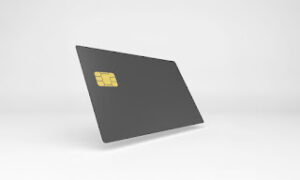Welcome to the world of NFTs, where rarity meets royalty and artists and collectors are finding new ways to thrive in the digital age. Non-Fungible Tokens (NFTs) have taken the art world by storm, revolutionizing how we view and value creativity. In this blog post, we will dive deep into the captivating realm of NFTs, exploring their immense benefits for both artists and collectors alike. Whether you’re an artist looking to monetize your work or a collector seeking unique treasures that transcend physical boundaries, get ready to unlock a whole new level of appreciation for NFTs as we uncover their untapped potential together!
Introduction
To understand NFTs, we first need to define fungibility. A fungible asset is something that can be easily exchanged for another asset of equal value. For example, money is fungible; you can trade one dollar bill for another without any change in value. On the other hand, non-fungible assets are unique and cannot be replaced with an identical item. This could include things like rare collectibles or original artworks.
NFTs are digital certificates of ownership that exist on a blockchain, a decentralized database used for recording transactions. Each token represents a unique digital asset such as an image, video clip, audio file, or even virtual real estate. Just like physical artwork or collectibles have unique characteristics that make them valuable and distinguishable from others of their kind, NFTs carry these same qualities in the digital realm.
What are NFTs, and how do they work?
An NFT is a unique digital asset that represents ownership of a specific item or piece of content. It stands for “non-fungible token,” which means it cannot be replaced by another identical item or token. This makes each NFT one-of-a-kind and therefore highly coveted by collectors.
Unlike traditional cryptocurrencies such as Bitcoin, where each unit is interchangeable with another, an NFT holds its own distinct value based on its rarity and uniqueness. Just like a physical artwork or collectible, an NFT’s value is determined by factors such as its scarcity, demand from buyers, and the reputation of the artist behind it.
Purpose of NFTs
The main purpose of NFTs is to provide proof of ownership over digital assets that were previously difficult to monetize due to their infinite reproducibility. This includes digital artworks, music albums, videos, memes, tweets—basically, any form of online content can be turned into an NFT.
For artists, this means having a new avenue to sell their work directly to collectors without relying on intermediaries such as galleries or auction houses. It also allows them to earn ongoing royalties whenever their NFT is resold in the future.
For collectors, NFTs offer a way to own and trade unique digital assets that have tangible value. They can display their collection on blockchain platforms or store it in digital wallets. Some also see it as a way to support their favorite artists and creators by investing in their work.
How do NFTs work?
NFTs are created and stored on blockchain technology, which is the same underlying technology used for cryptocurrencies. Blockchain acts as a digital ledger that records every transaction made with an NFT, making it immutable and transparent.
When an artist creates an NFT, they attach a unique code or token to the file representing their artwork or content. This code is then verified and recorded on the blockchain, establishing its authenticity and ownership.
When someone purchases an NFT, they receive a digital certificate of ownership that is verifiable through the blockchain. This means that even if the original file can be copied and shared online, there will only ever be one legitimate owner of the NFT—the person who holds the token.
The benefits of using NFTs for artists:
NFTs, or non-fungible tokens, have recently gained popularity in the art world as a new way for artists to showcase and sell their work. These digital assets are unique and cannot be replicated, making them valuable collectibles in the same way physical artwork is.
For artists, there are several benefits to using NFTs.
1. Authenticity and Provenance
One of the main advantages of NFTs for artists is that they provide a secure way to prove the ownership and authenticity of their work. The blockchain technology used in NFTs ensures that each token is one-of-a-kind and cannot be duplicated. This means that buyers can trust that they are purchasing an original piece from the artist themselves.
Moreover, the transaction history of NFTs is recorded on the blockchain, providing a transparent provenance for each artwork. This adds value to the piece, as collectors can trace its ownership back to the artist, increasing its legitimacy and potentially driving up its price.
2. Control over Pricing and Royalties
NFTs also give artists more control over pricing their work and receiving royalties for future sales. With traditional art sales, once an artwork is sold, artists often have little control over how much it resells for in galleries or auction houses. However, with NFTs, artists can set specific terms for future sales through smart contracts embedded within the token.
For example, an artist can set a fixed percentage of any resale price as royalties, which will automatically be transferred to them every time the artwork is sold. This gives artists a way to earn ongoing income from their work, even after it has been sold.
3. Global Reach and Accessibility
NFTs have the potential to reach a global audience of art collectors and enthusiasts. By using digital platforms and marketplaces, artists can showcase their work to a wider audience and potentially sell their pieces for higher prices than they would in a physical gallery setting.
Additionally, NFTs make art more accessible to buyers who may not have the means or opportunity to purchase physical artwork. This can open up new markets for artists and create more opportunities for them to share their work with the world.
4. Possibilities for Interactive and Dynamic Art
One unique aspect of NFTs is that they can be programmed to include interactive or dynamic elements, making them more engaging for collectors. This allows artists to explore new mediums and create innovative forms of art that may not be possible with traditional physical pieces.
For example, an artist could create an NFT that changes color over time or responds to user input, creating a one-of-a-kind experience for each collector.
The benefits of using NFTs for collectors:
The rise of NFTs (non-fungible tokens) has taken the art world by storm, offering a new and unique way for artists to showcase and sell their work. But beyond just being a lucrative avenue for creators, NFTs also bring a variety of benefits to collectors. In this section, we will explore the advantages of using NFTs for collectors.
1. Authenticity and Provenance
One of the main benefits of using NFTs for collectors is the authenticity and provenance they provide. Each NFT is created on blockchain technology, making it unique, traceable, and verifiable. This means that once an artist creates an NFT representing their artwork, it becomes impossible to duplicate or counterfeit.
For collectors, this adds significant value, as they can be sure that the artwork they are purchasing is authentic and has an indisputable record of ownership. This eliminates any doubts about the legitimacy of the artwork, making it a valuable addition to any collection.
2. Ownership Rights
Another advantage of owning an NFT is that it provides clear ownership rights to the collector. With traditional physical artworks, there can be disputes over who owns the original piece or if multiple copies exist.
However, with NFTs, there is only one digital copy linked to each token on the blockchain network. This ensures that only one person can own the original digital artwork associated with that specific token.
3. Increased Liquidity
NFTs have also brought increased liquidity into the art market. Traditionally, buying and selling physical art pieces can be a lengthy and complicated process, involving galleries, auction houses, and other intermediaries.
But with NFTs, collectors can easily buy and sell their digital artworks on decentralized marketplaces at any time. This not only makes it easier to trade artworks but also increases the liquidity of the market as a whole.
4. Fractional Ownership
NFTs also allow for fractional ownership of artwork. This means that multiple people can own a small percentage of a particular piece of art by owning a fraction of the NFT associated with it.
Fractional ownership allows collectors to diversify their portfolios by owning smaller portions of high-value artwork that they may not have been able to afford otherwise. It also enables them to invest in emerging artists or niche markets that may have been previously inaccessible.
5. Proof of Investment
Lastly, owning an NFT provides proof of investment for collectors. As blockchain technology is transparent and immutable, all transactions related to an NFT are recorded on the blockchain. This means that collectors can easily track the value and history of their investments in real-time.
This feature adds credibility to the artwork’s value and serves as evidence for potential future sales or appraisals.
Conclusion
NFT tokens have taken the art world by storm, offering a new and exciting way for artists to showcase their work and for collectors to own unique and valuable pieces. As we have explored in this article, NFTs offer a range of benefits for both artists and collectors, from increased exposure and control over their digital creations to potential financial rewards through royalties.



































